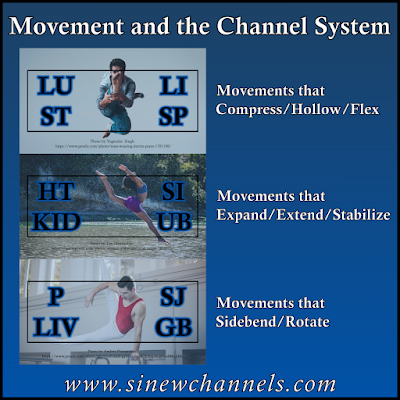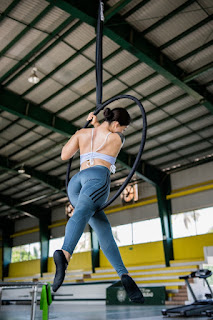The channels (meridians) of Chinese medicine are oriented along anatomical planes. Understanding this arrangement helps understand the channels roles with movement.
The Western anatomical planes can help understand the arrangement of the channels on the body. The sagittal plane divides the left and right halves of the body. If this is a midsagittal plane (along the midline), then the plane would enter the body at the Ren Mai (Conception Vessel) and exit at the Du Mai (Governing Vessel). If the plane were moved off the midline, it would cover the Spleen, Stomach, Lung or Large Intestine channels, depending on how far lateral or medial the sagittal plane is located.
Note that for this to work for the Lung and Large Intestine channels, the person would need to be standing with the arms down by the side and the palms facing inward as opposed to standard Western anatomical position where the palms face forward. This more natural relaxed palm position is how the Chinese system references channels. With the palms facing inward, the radial aspect of the arm is forward and the sagittal plane would penetrate at the Lung and Large Intestine channels. These channels are anteromedial and anterolateral (radial, ventral and dorsal surface of the arms). These channels parallel their related Spleen and Stomach channels on the lower extremities which are also anteromedial and anterolateral.
 |
| Line represents the rectus femoris, a muscle of the ST jingjin. It performs hip flexion and knee extension, which are sagittal plane movements. |
This same plane would exit the body in the back and would access the Urinary Bladder, Small Intestine, Heart, and Kidney channels. The Kidney channel does have a portion on the front of the abdomen and chest and we will return to it, but these channels generally counter the action of the front channels. Included are things like the extensor carpi ulnaris (SI and HT), triceps brachii (SI), the erector spinae (UB), the hamstrings (UB), semimembranosus (KID), and the gastrocnemius (UB) and soleus (KID). These channel sinews extend the back and hip, extend the shoulder, perform ulnar deviation of the wrist, and perform plantar flexion of the ankle.
 |
| Line represents the biceps femoris, a muscle of the UB jingjin. It performs hip extension and knee flexion, which are sagittal plane movements |
A portion of the KID channel does travel in the abdomen, I interpret this to be the transverse abdominis, which wouldn't so much flex or extend the trunk, but would support and lengthen the spine along the midsagittal line. This works with the Urinary Bladder channel to give upright posture. The channel also travels into the chest and allows the chest to open in upright posture. Below is a video that highlights a chest opening qigong pattern which alternates between the back and the front channels, all creating movements in the sagittal plane.










.jpg)

